Negotiation as a Mode of Dispute Resolution
Introduction:

Negotiation is a fundamental concept in the field of dispute resolution, serving as a versatile and effective method to address conflicts in various industries and scenarios. This chapter aims to thoroughly explain the concept of negotiation, its underlying principles, and how it differs from other methods of dispute resolution. Real-life case studies and examples will be utilized to illustrate the effectiveness of negotiation in resolving conflicts. Additionally, the advantages and limitations of negotiation will be critically analyzed, considering factors such as power dynamics, cultural considerations, and the potential for achieving win-win outcomes. This comprehensive analysis will be informed by relevant research findings, theories, and expert opinions from reputable sources.
Definition and Scope:
To understand negotiation as a mode of dispute resolution, it is essential to establish its definition and scope. Negotiation can be defined as a voluntary process through which parties engage in dialogue to reach a mutually agreeable solution or settlement to a dispute. It involves compromise, joint problem-solving, and the exploration of shared interests, rather than resorting to adversarial tactics.
Negotiation is a dynamic process involving two or more parties with divergent interests seeking to find common ground and reach a mutually acceptable solution. It is important to understand the key elements that constitute negotiation:
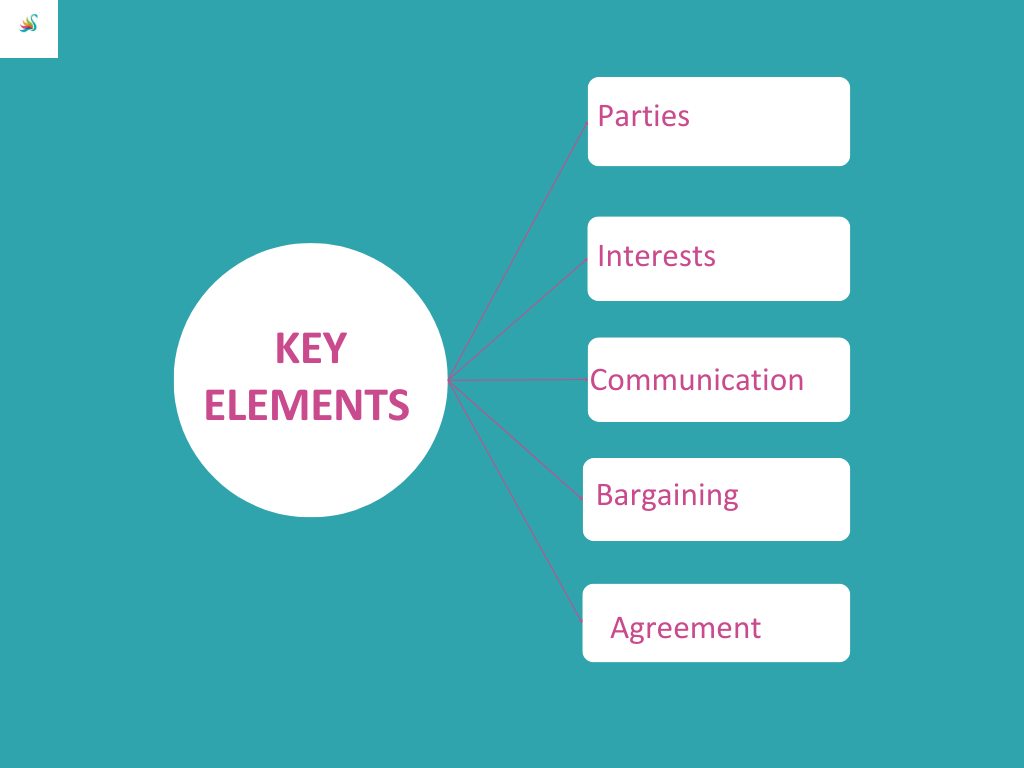
a) Parties: Negotiation involves at least two parties, each with its own set of interests, needs, and objectives.
b) Interests: Each party has specific interests they wish to satisfy through the negotiation process.
c) Communication: Negotiation relies on effective communication to express ideas, concerns, and proposals.
d) Bargaining: The parties engage in give-and-take exchanges to influence each other’s positions and reach an agreement.
e) Agreement: The end goal of negotiation is to achieve a mutually agreed-upon resolution.
Phases of Negotiation:
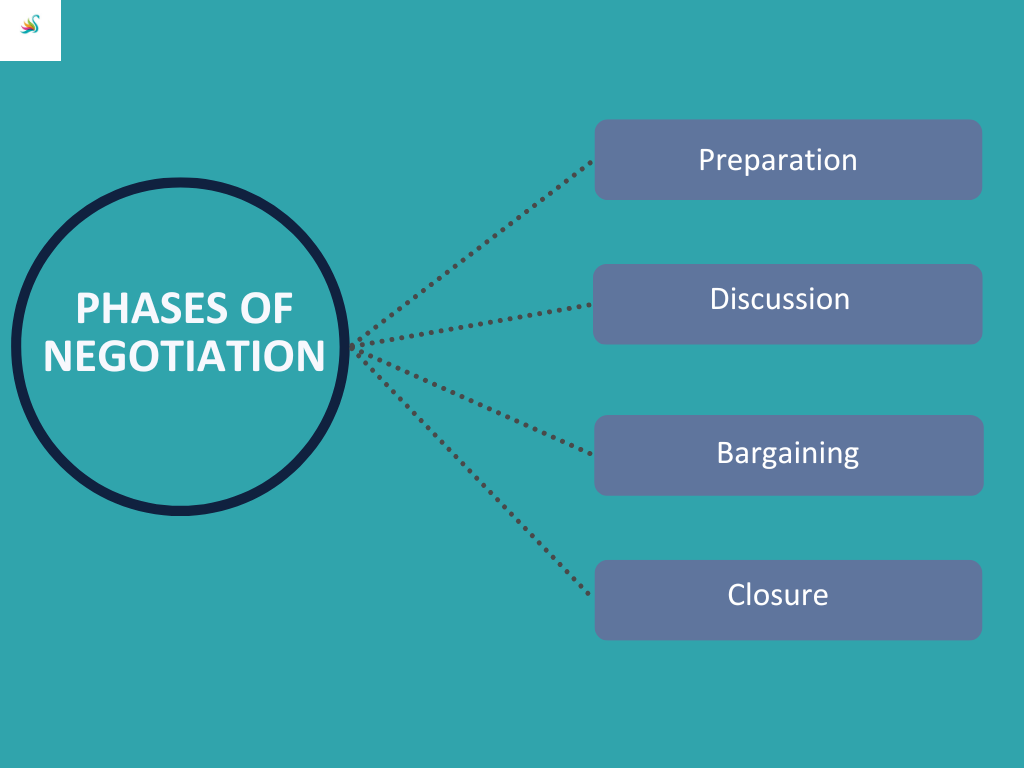
a) Preparation: This phase involves gathering information, setting objectives, and understanding the other party’s positions and interests.
b) Discussion: The parties engage in open communication to share their perspectives and explore potential solutions.
c) Bargaining: This phase involves the actual give-and-take process, where concessions are made to achieve a favorable outcome.
d) Closure: Once an agreement is reached, the parties formalize the terms and conclude the negotiation.
Basic Principles:
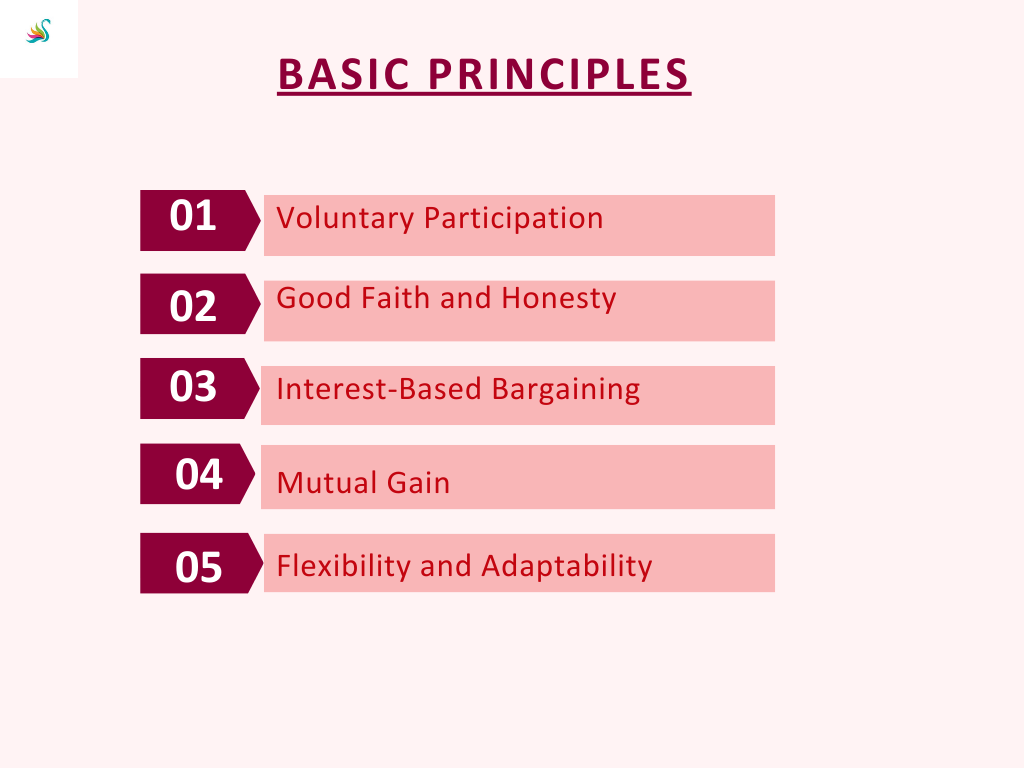
Voluntary Participation: Negotiation requires willing participation from all parties involved, emphasizing their autonomy and choice to engage in the process.
Good Faith and Honesty: Parties must approach negotiation with sincerity and openness, sharing relevant information transparently and acting ethically throughout the process.
Interest-Based Bargaining: Negotiation focuses on identifying and addressing the underlying interests of each party, seeking creative solutions that meet the needs of all involved.
Mutual Gain: Parties aim to achieve outcomes that maximize benefits for all involved, moving beyond zero-sum thinking towards win-win solutions.
Flexibility and Adaptability: Negotiation requires adaptability to changing circumstances and a willingness to explore alternative approaches to reach resolution.
Applications of Negotiation across Industries:
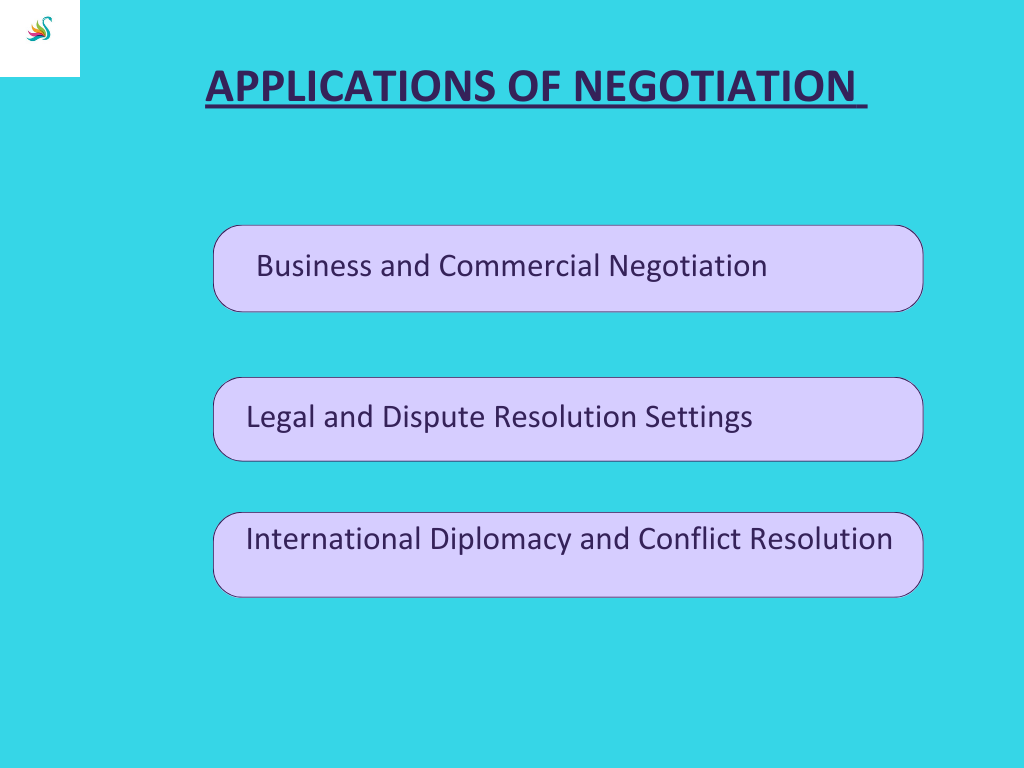
Business and Commercial Negotiation:
In the business and commercial realm, negotiation plays a vital role in resolving conflicts, facilitating agreements, and maintaining relationships between organizations. Case studies from sectors such as mergers and acquisitions, labor disputes, and contract negotiations will be examined to understand the practical applications of negotiation.
Legal and Dispute Resolution Settings:
Negotiation is commonly employed in legal settings, offering parties an opportunity to settle disputes outside of litigation. Real-life examples from civil disputes, family law, and alternative dispute resolution mechanisms like collaborative law and multi-party negotiations will provide insight into negotiation’s effectiveness in this context.
International Diplomacy and Conflict Resolution:
Negotiation assumes a crucial role in international diplomacy and conflict resolution, helping to resolve disputes between nations, settle territorial claims, address human rights issues, and negotiate international treaties. Case studies involving historical conflicts and treaties will demonstrate the complexities and impact of negotiation on a global scale.
Advantages and Limitations of Negotiation:
Advantages of Negotiation:
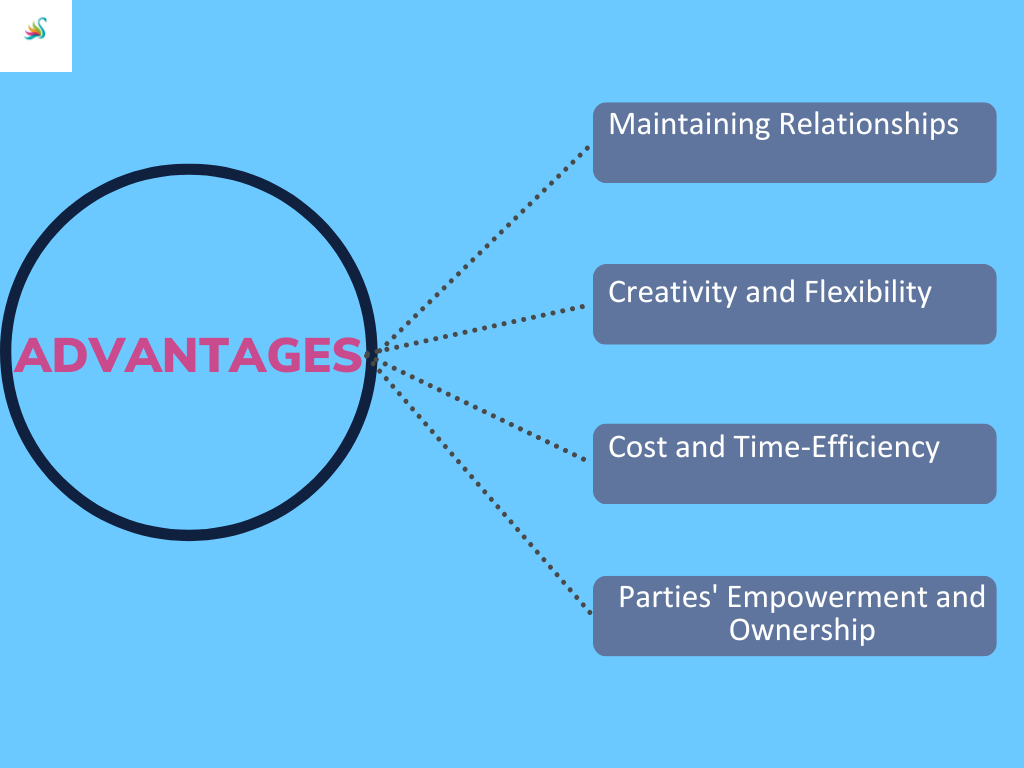
Maintaining Relationships: Negotiation focuses on open communication and collaboration, preserving relationships even after disputes are resolved.
Creativity and Flexibility: Negotiation allows for flexible and innovative solutions that might not be possible through other dispute resolution methods.
Cost and Time-Efficiency: Negotiation typically requires fewer resources, both in terms of time and expenses, compared to litigation or arbitration.
Parties’ Empowerment and Ownership: Negotiation empowers parties to control the process and outcome, fostering a sense of ownership and satisfaction.
Limitations of Negotiation:
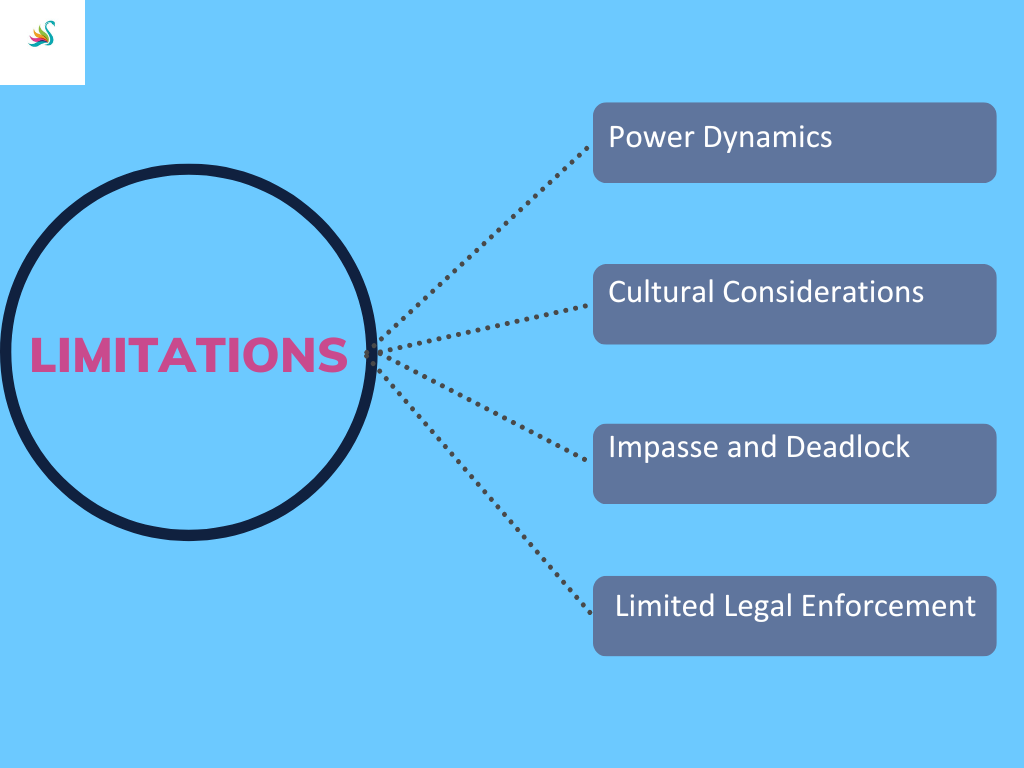
Power Dynamics: Negotiation can be influenced by power imbalances, with stronger parties having an advantage and potentially dictating the terms of the negotiation.
Cultural Considerations: Cultural differences can impact negotiation styles and expectations, requiring a nuanced understanding and adaptability.
Impasse and Deadlock: Negotiation may reach an impasse if parties cannot find common ground or if disagreements arise on fundamental issues.
Limited Legal Enforcement: Agreements reached through negotiation may lack the force of law, raising concerns about enforceability.
Factors Influencing Negotiation Outcomes:
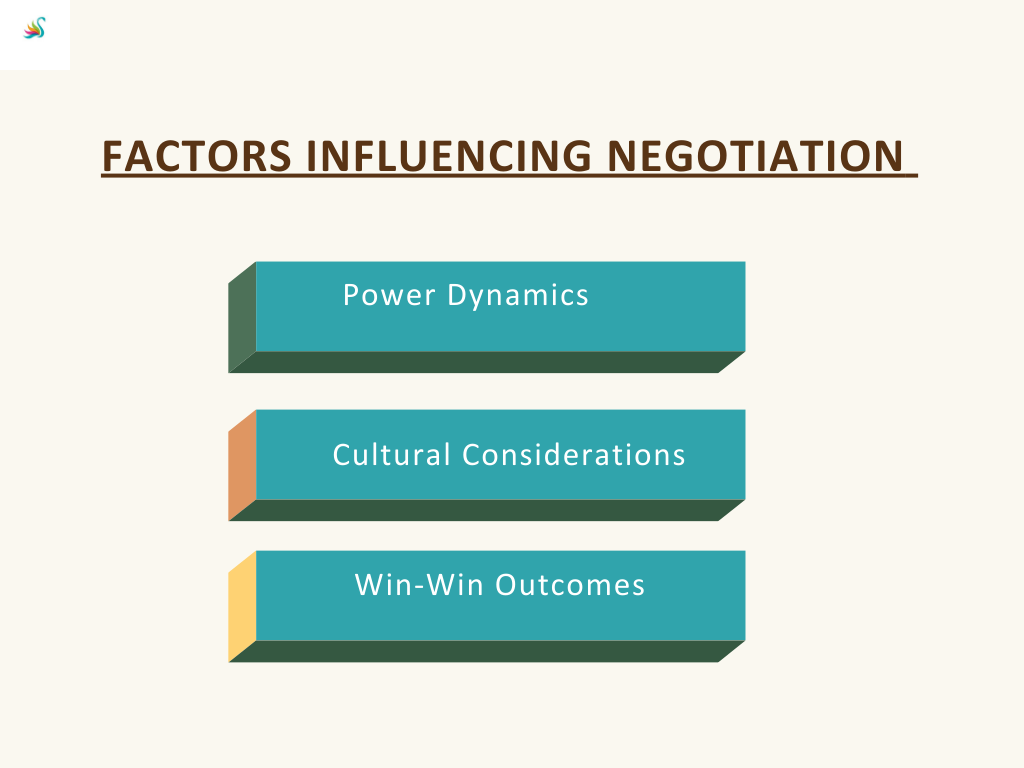
Power Dynamics:
Analyzing the influence of power dynamics on negotiation outcomes, this section will explore how parties’ relative power positions can impact their ability to achieve their desired outcomes.
Cultural Considerations:
Cultural factors significantly impact negotiation approaches and outcomes, exploring how culture influences negotiation styles, communication norms, and the perception of successful outcomes.
Win-Win Outcomes:
Understanding win-win outcomes in negotiation, this section will explore how parties can move beyond zero-sum thinking and focus on collaborative strategies to ensure that both parties’ benefit.
Conclusion:
Contracts are the lifeblood of business and personal relationships, ensuring the smooth functioning of society. Understanding the concepts of agreements, the essential elements of contracts, and the differences between void and voidable contracts is crucial for anyone entering into legal arrangements. By forming valid and enforceable contracts, individuals and businesses can safeguard their interests, minimize risks, and promote fair and efficient transactions. The legal principles and remedies associated with contract law provide a robust framework for resolving disputes and promoting justice in the realm of contractual relationships. Whether engaging in a simple oral agreement or drafting a complex written contract, a clear understanding of the law will contribute to successful and beneficial interactions for all parties involved.
